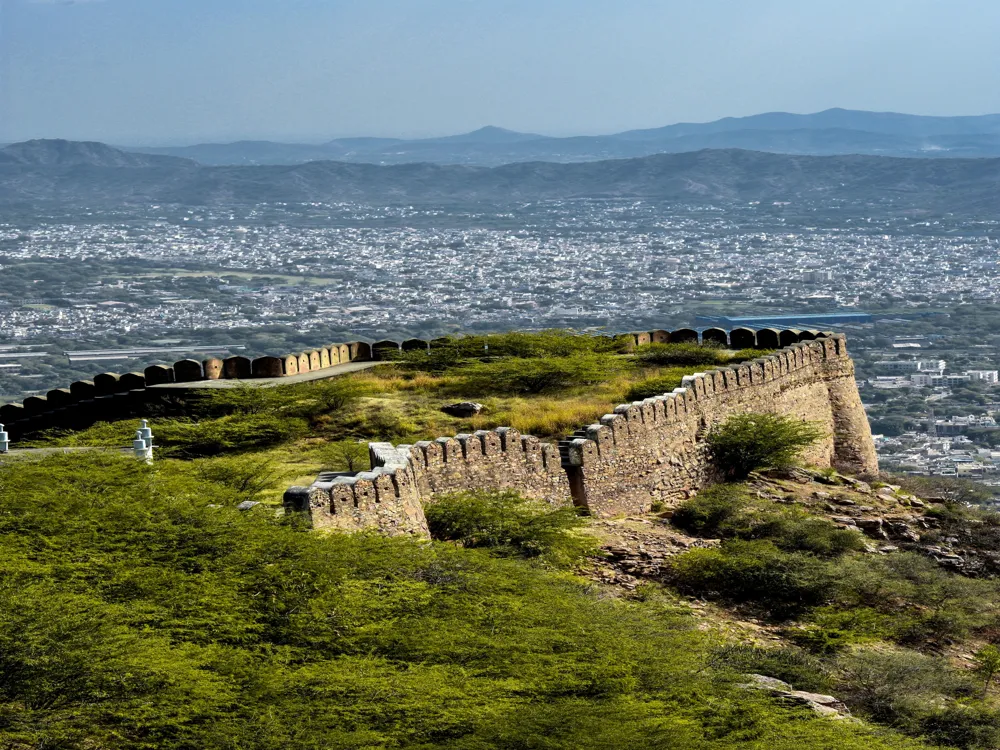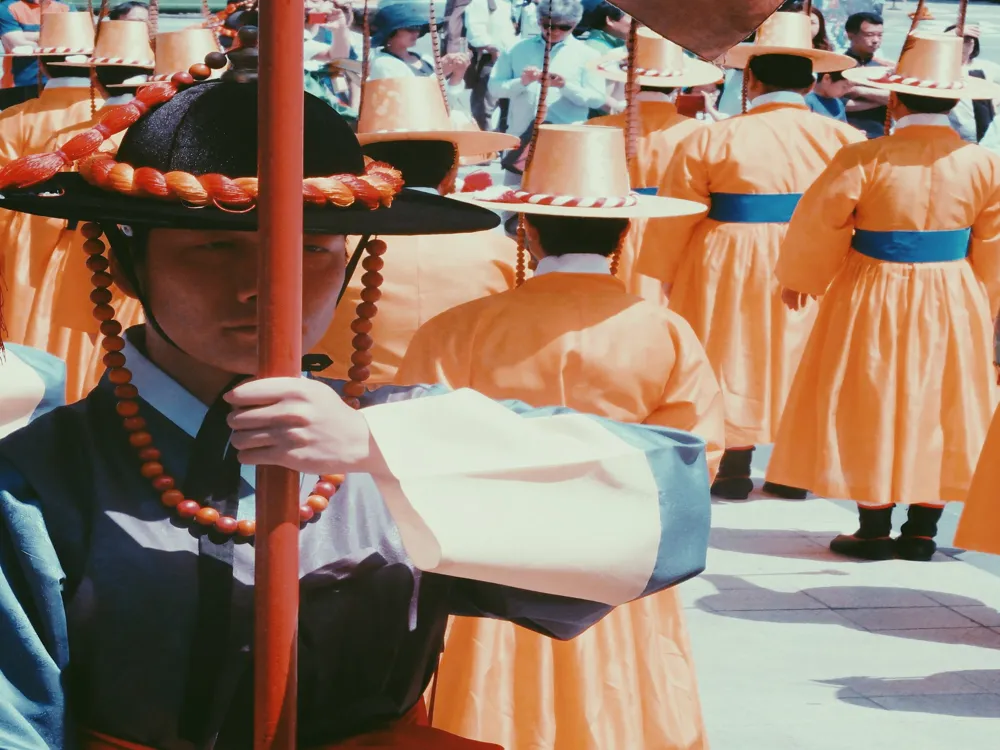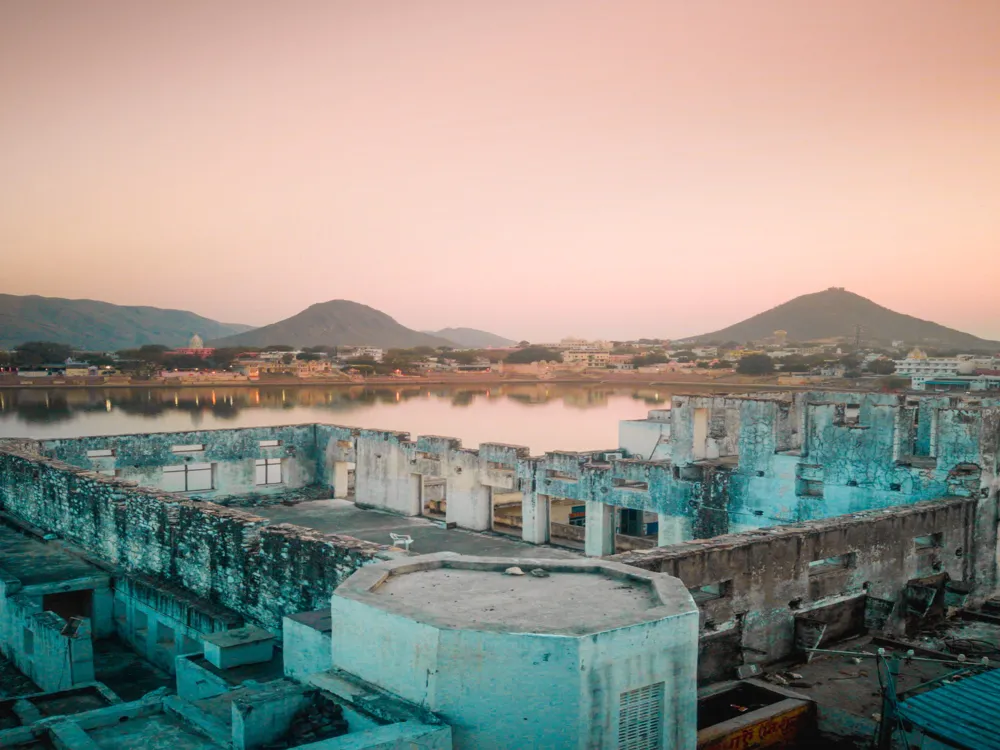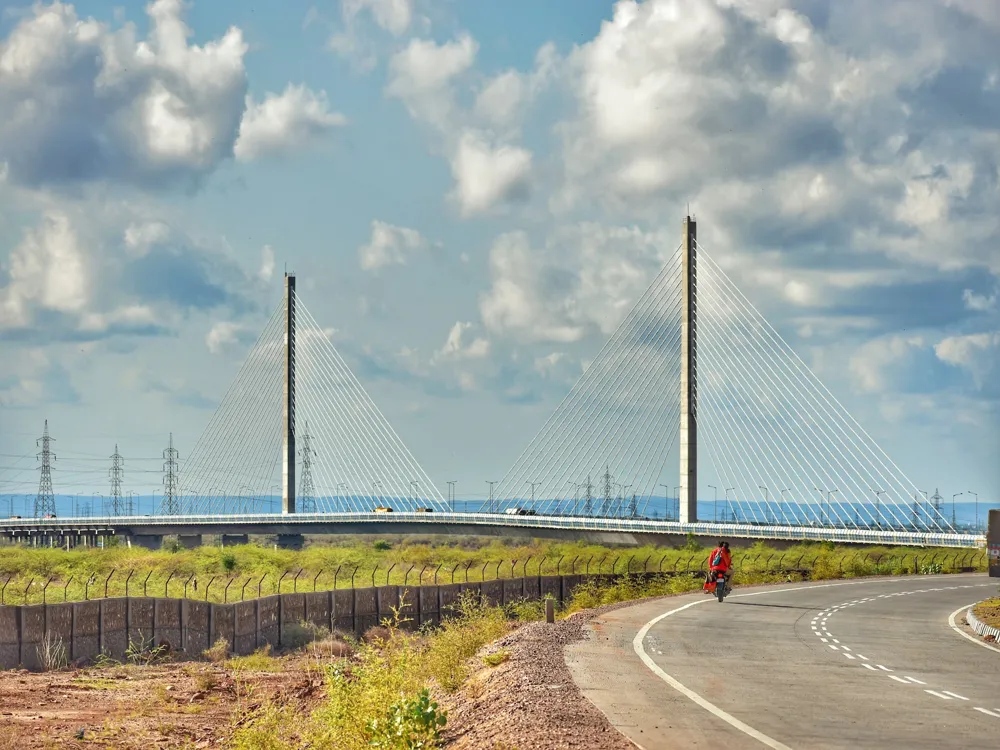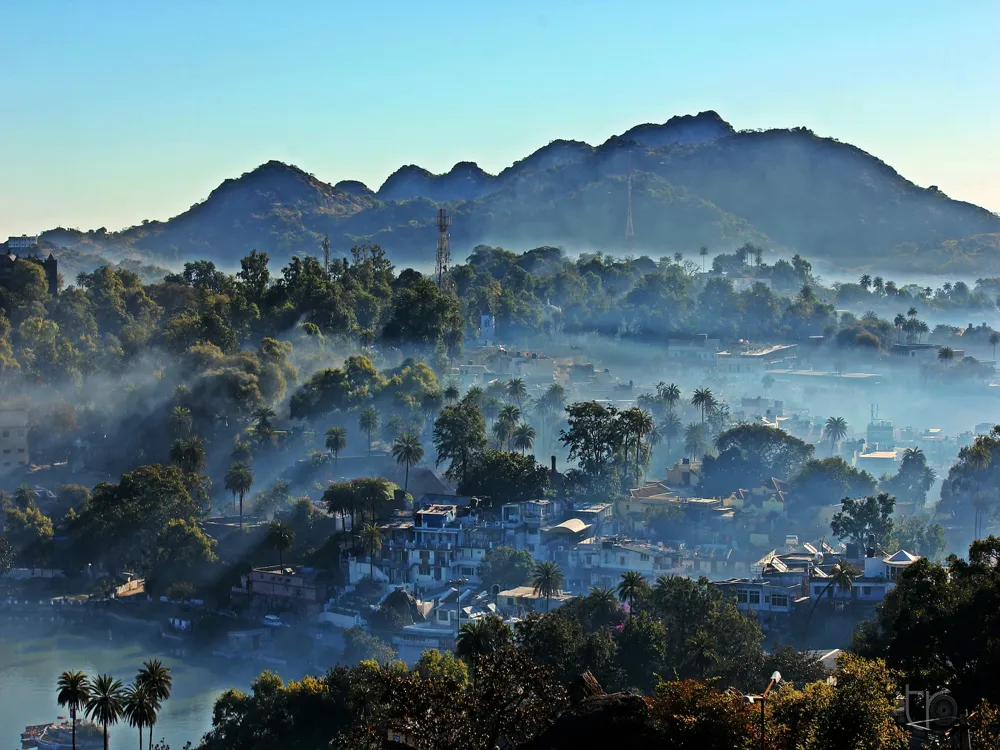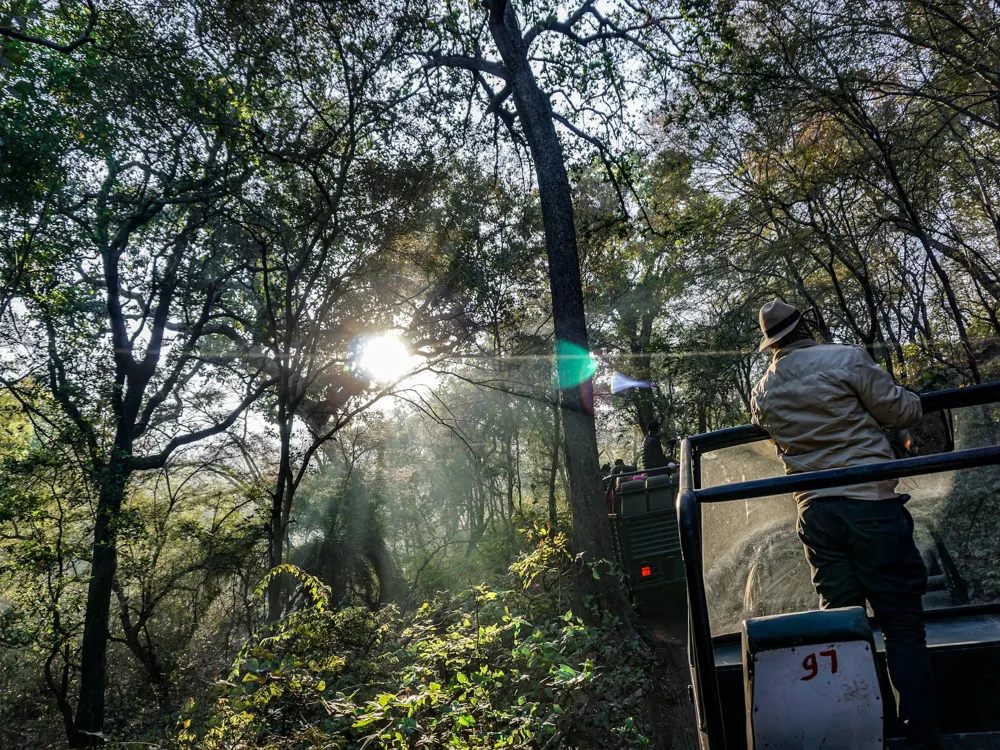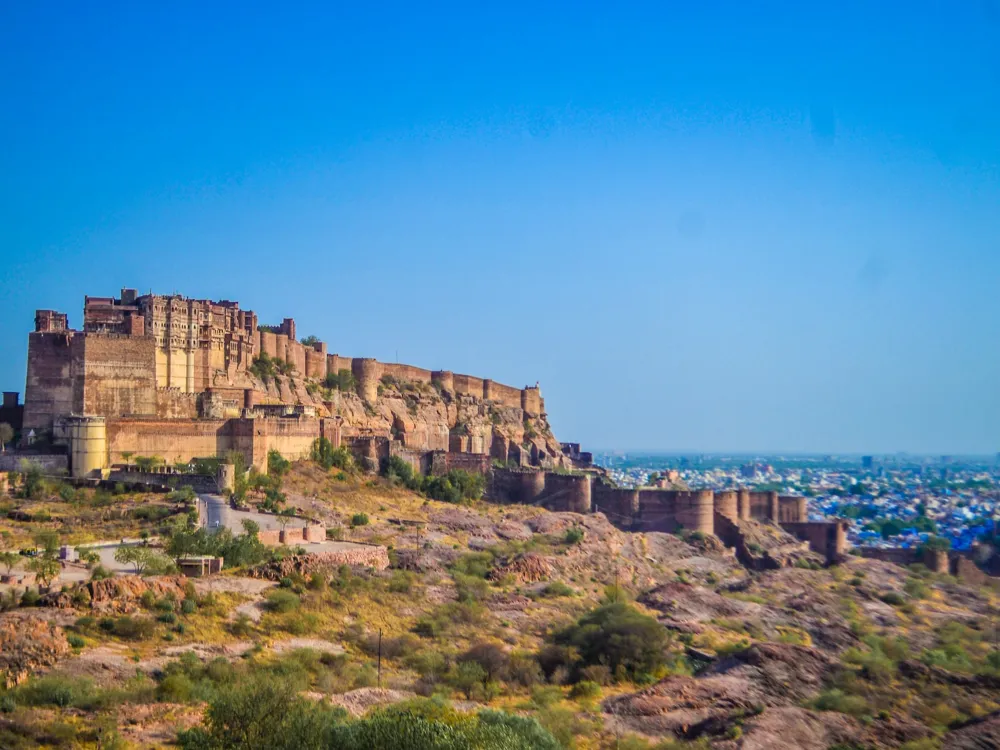Adhai Din ka Jhopra, a remarkable historical mosque in Ajmer, Rajasthan, is steeped in centuries of history and architectural splendour. This ancient mosque was built by Qutub-ud-Din Aibak, the first Sultan of Delhi, in 1199 CE. Originally, it was a Sanskrit college, but after Muhammad Ghori's victory over Prithviraj Chauhan, it was converted into a mosque. The name 'Adhai Din ka Jhopra' translates to 'the hut of two and a half days,' referring to a legend that it was constructed within two and a half days. The mosque's architecture is a fine blend of Indo-Islamic style, reflecting the cultural fusion that occurred during this period. The main hall of the mosque is adorned with a series of high arches, each covered with intricate carvings and verses from the Quran. The structure showcases the skill of artisans of that era, combining elements from both Hindu and Islamic architectural traditions. The site not only holds immense religious significance but also stands as a testament to India's rich and diverse historical legacy. The architecture of Adhai Din ka Jhopra is a fascinating amalgamation of Hindu and Islamic styles, making it a significant study in the evolution of Indo-Islamic architecture. The mosque's facade is dominated by a series of tall, pointed arches, a hallmark of Islamic architecture. These arches are set into a rectangular frame, which is a typical feature of Hindu temple architecture. The interior of the mosque is equally captivating, featuring a large prayer hall with a series of pillars, each intricately carved with Hindu and Jain motifs. These pillars support a series of horseshoe-shaped arches, creating a sense of openness and grandeur within the space. The mihrab (prayer niche) in the mosque is an exquisite piece of Islamic art, embellished with intricate calligraphy and geometric patterns, which are characteristic of traditional Islamic decor. The ideal time to visit Adhai Din ka Jhopra is between October and March when the weather in Rajasthan is pleasant and conducive for sightseeing. Visitors should dress modestly, covering shoulders and knees. It's also recommended to remove shoes before entering the main prayer area as a sign of respect. Photography is allowed, but it's advisable to avoid taking pictures during prayer times and always ask for permission if photographing people. Adhai Din ka Jhopra is easily accessible from various parts of Ajmer. The nearest airport is the Kishangarh Airport, about 30 km away. For those traveling by train, Ajmer Junction is the closest railway station, located just 2 km from the mosque. Ajmer is also well-connected by road, with regular bus services from nearby cities like Jaipur, Delhi, and Udaipur. Local transportation such as taxis, auto-rickshaws, and buses are readily available to reach the mosque. Read More:Overview of Adhai Din ka Jhopra, Ajmer
Architecture of Adhai Din ka Jhopra
Tips When Visiting Adhai Din ka Jhopra
Best Time to Visit
Dress Code and Etiquette
Photography Guidelines
How To Reach Adhai Din ka Jhopra
Adhai Din ka Jhopra
Ajmer
Rajasthan
₹ 9,000 onwards
View ajmer Packages
Weather :
Tags : Mosque
Time Required : Around 30 minutes
Entry Fees : No Entry Fee
Timings : 6:00 AM - 7:00 PM
Constructed in : 1199 AD
Constructed By : Qutub-ud-Din-Aibak
Planning a Trip? Ask Your Question
Also Refered As:
Akbari Fort and Museum
Ajmer Travel Packages
View All Packages For Ajmer
Top Hotel Collections for Ajmer

Private Pool

Luxury Hotels

5-Star Hotels

Pet Friendly
Top Hotels Near Ajmer
Other Top Ranking Places In Ajmer
View All Places To Visit In ajmer
Faq on Ajmer
What is Adhai Din ka Jhopra?
Adhai Din ka Jhopra, which literally translates to "shed of two and a half days," is an ancient mosque located in Ajmer, Rajasthan, India. It is a masterpiece of Indo-Islamic architecture and was originally built as a Sanskrit college before being converted into a mosque.
Why is it called Adhai Din ka Jhopra?
There are several theories about the origin of its name. One popular belief is that it was named after a two-and-a-half-day fair that used to be held here. Another theory suggests that the mosque was constructed in two and a half days. However, these stories are more mythological than factual.
Who built Adhai Din ka Jhopra and when?
The structure was initially constructed as a Sanskrit college in the 12th century by King Vigraharaja IV. However, the conversion into a mosque was commissioned by Qutb-ud-Din Aibak, the first Sultan of Delhi, in 1193, after Muhammad Ghori's victory over Prithviraj Chauhan.
What is unique about its architecture?
Adhai Din ka Jhopra is renowned for its blend of Hindu and Islamic architectural styles. The mosque features a seven-arched wall inscribed with verses from the Quran and is supported by 124 pillars. The intricate carvings and the blend of motifs showcase the confluence of two distinct architectural traditions.
View ajmer Packages
Weather :
Tags : Mosque
Time Required : Around 30 minutes
Entry Fees : No Entry Fee
Timings : 6:00 AM - 7:00 PM
Constructed in : 1199 AD
Constructed By : Qutub-ud-Din-Aibak
Planning a Trip? Ask Your Question
Akbari Fort and Museum
Ajmer Travel Packages
View All Packages For Ajmer
Top Hotel Collections for Ajmer

Private Pool

Luxury Hotels

5-Star Hotels

Pet Friendly
Top Hotels Near Ajmer
Other Top Ranking Places In Ajmer
Faq on Ajmer
What is Adhai Din ka Jhopra?
Adhai Din ka Jhopra, which literally translates to "shed of two and a half days," is an ancient mosque located in Ajmer, Rajasthan, India. It is a masterpiece of Indo-Islamic architecture and was originally built as a Sanskrit college before being converted into a mosque.
Why is it called Adhai Din ka Jhopra?
There are several theories about the origin of its name. One popular belief is that it was named after a two-and-a-half-day fair that used to be held here. Another theory suggests that the mosque was constructed in two and a half days. However, these stories are more mythological than factual.
Who built Adhai Din ka Jhopra and when?
The structure was initially constructed as a Sanskrit college in the 12th century by King Vigraharaja IV. However, the conversion into a mosque was commissioned by Qutb-ud-Din Aibak, the first Sultan of Delhi, in 1193, after Muhammad Ghori's victory over Prithviraj Chauhan.
What is unique about its architecture?
Adhai Din ka Jhopra is renowned for its blend of Hindu and Islamic architectural styles. The mosque features a seven-arched wall inscribed with verses from the Quran and is supported by 124 pillars. The intricate carvings and the blend of motifs showcase the confluence of two distinct architectural traditions.








